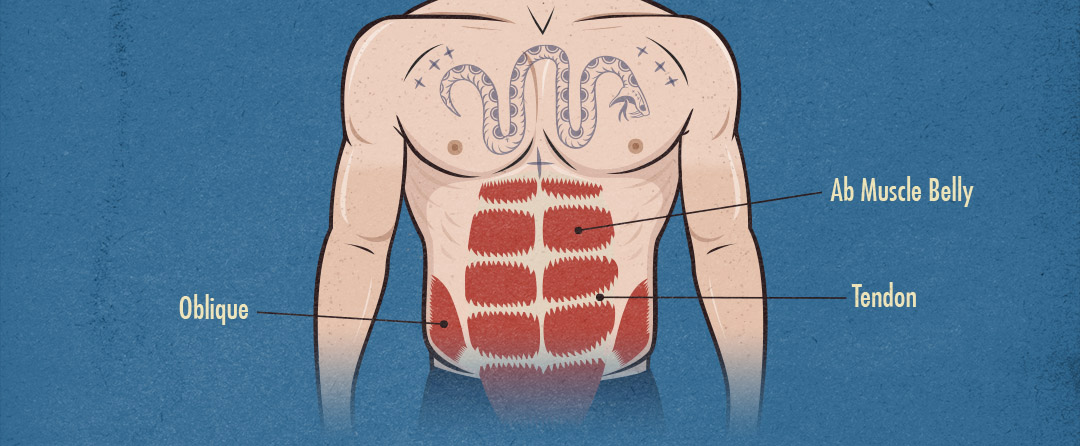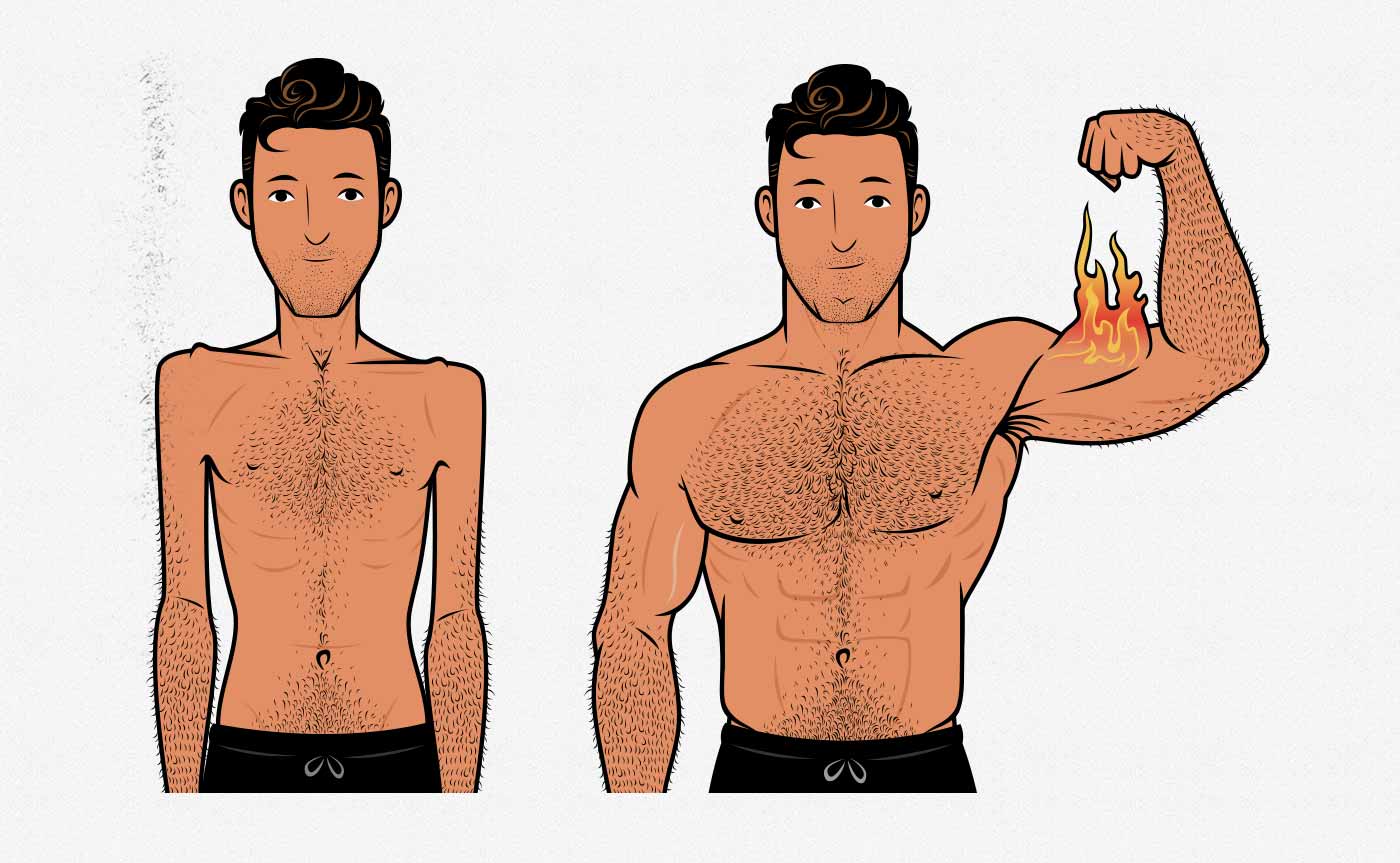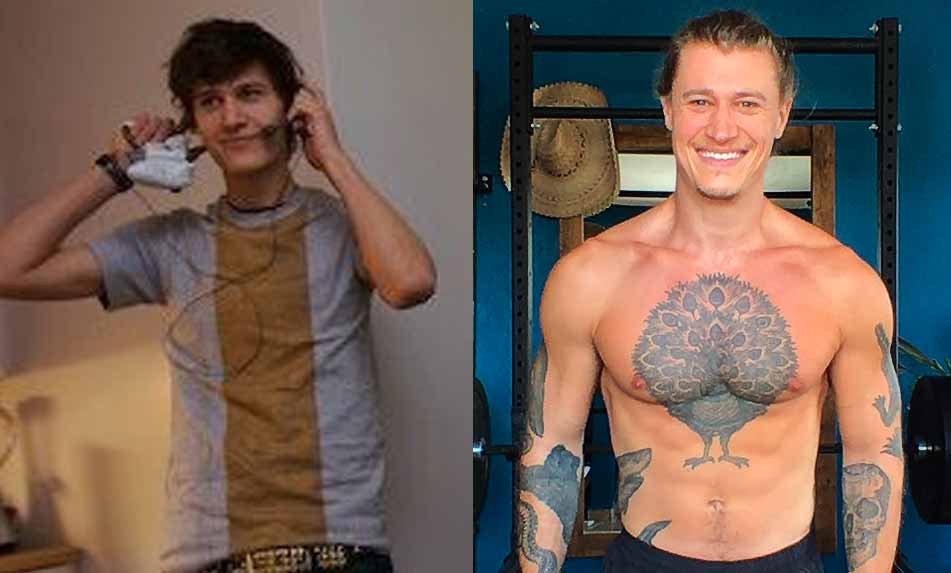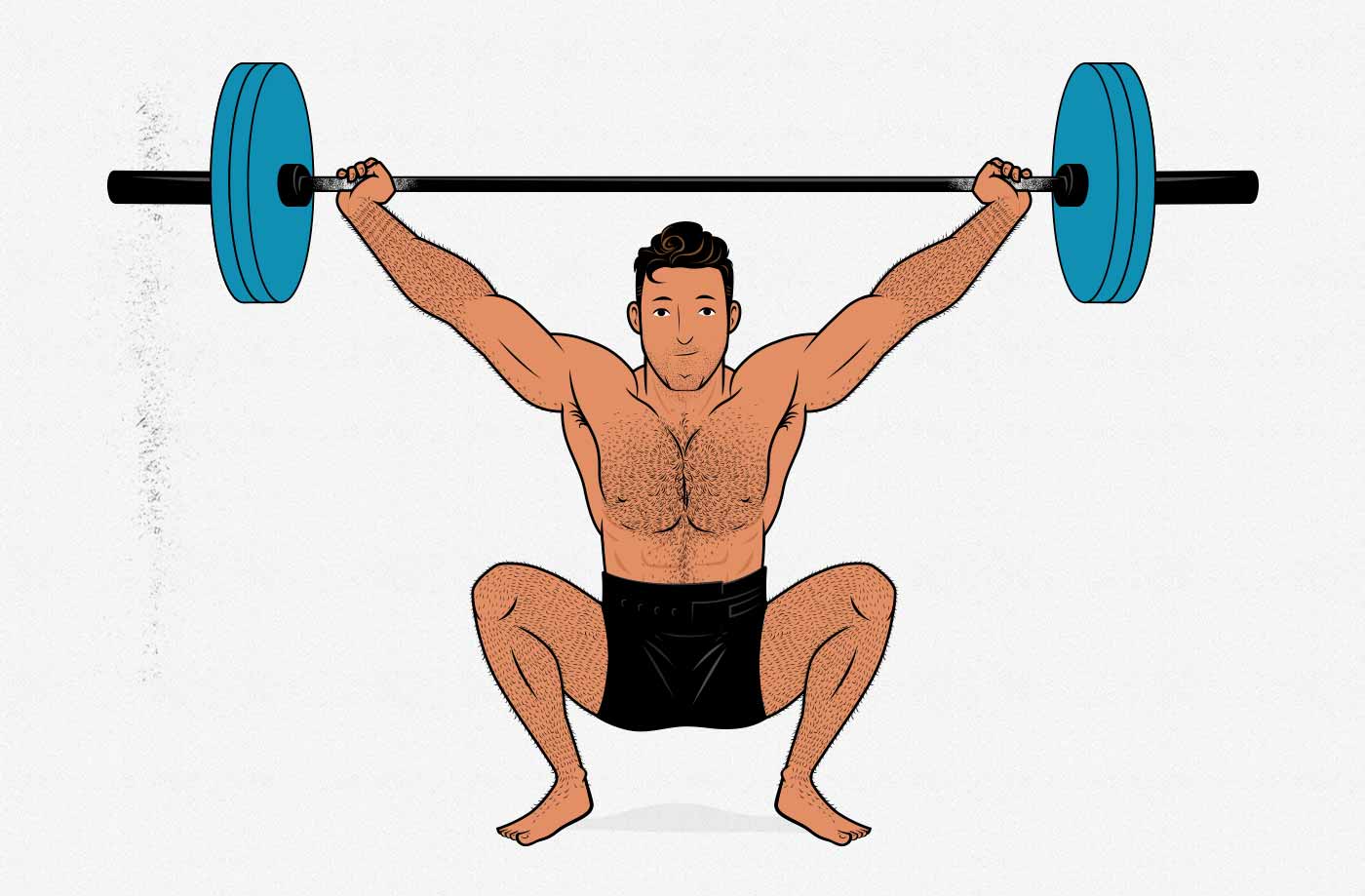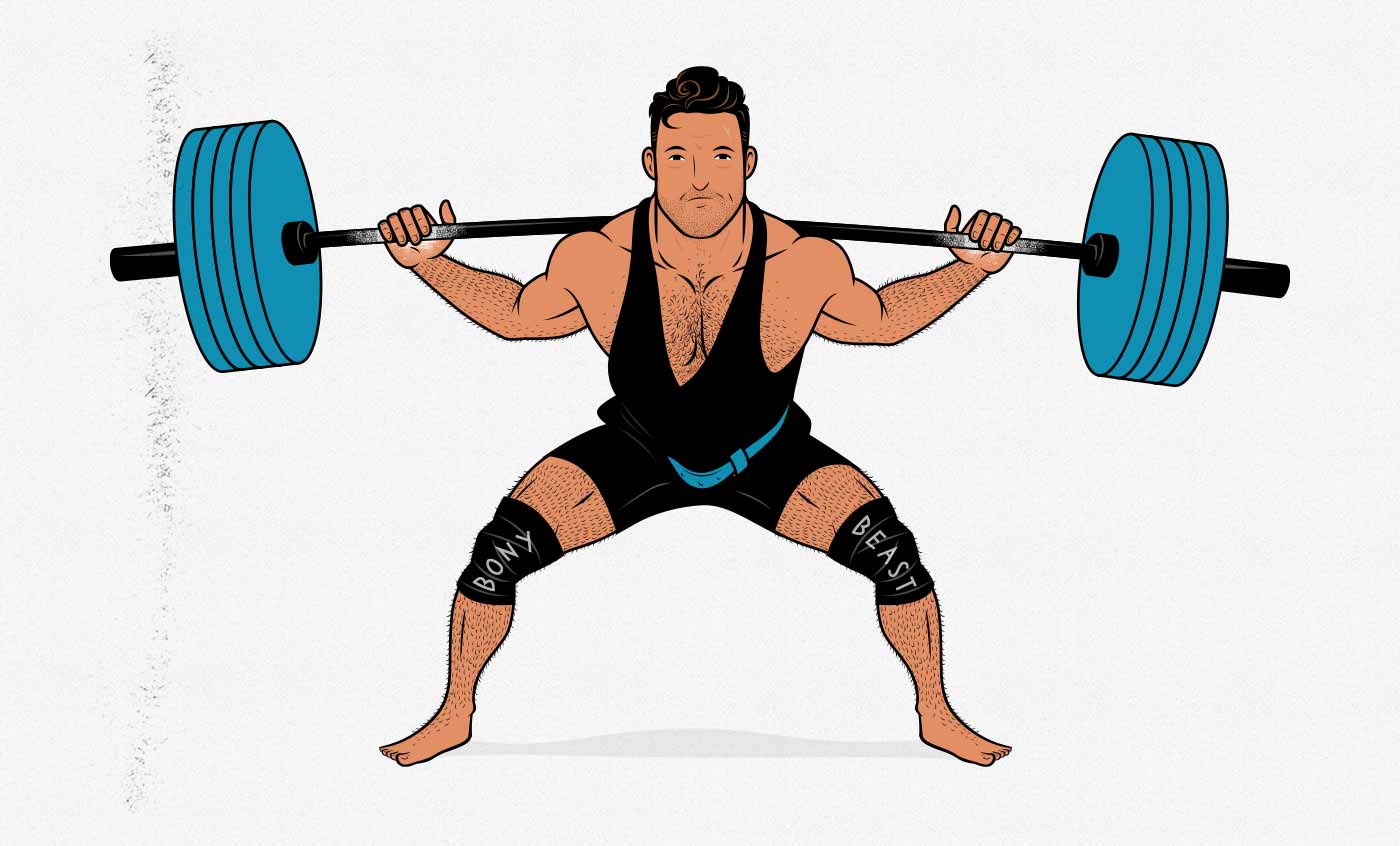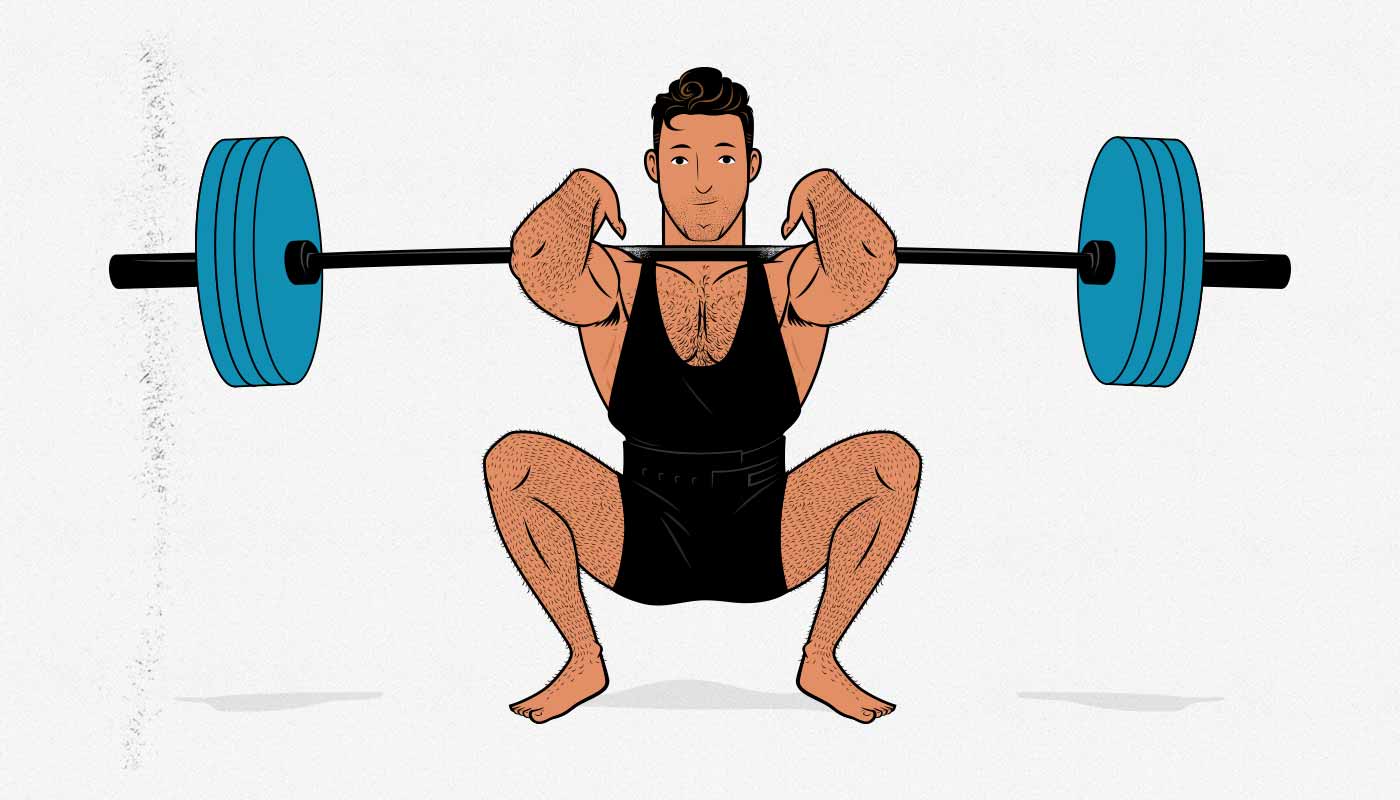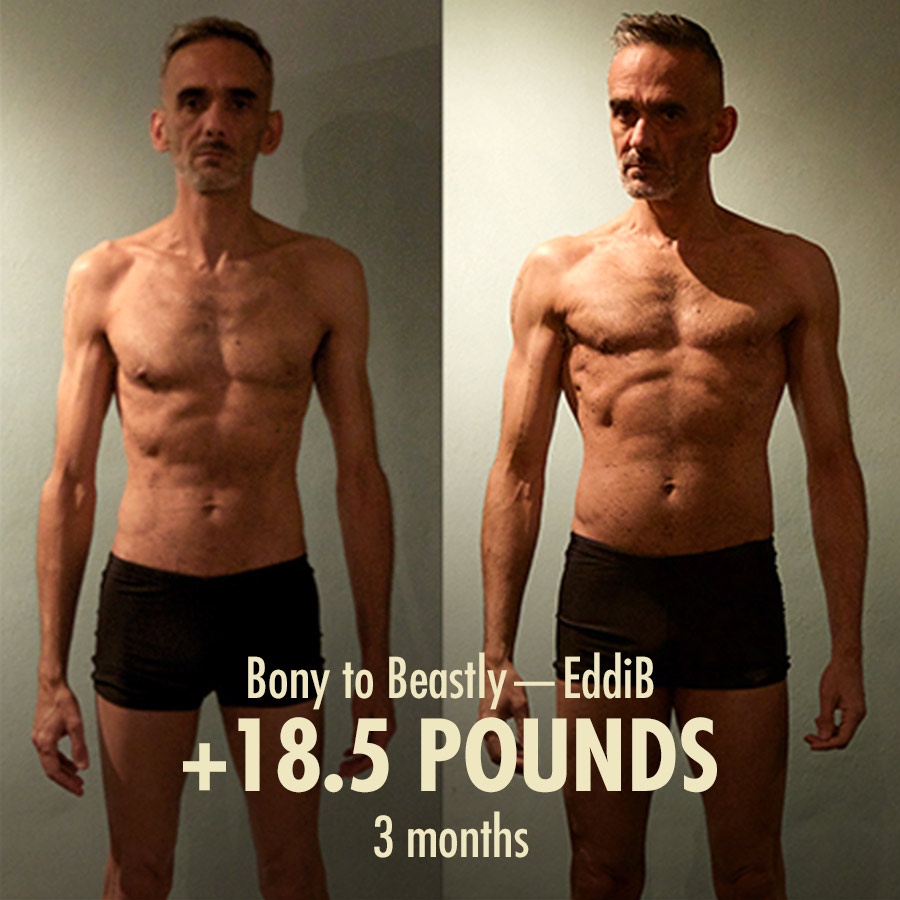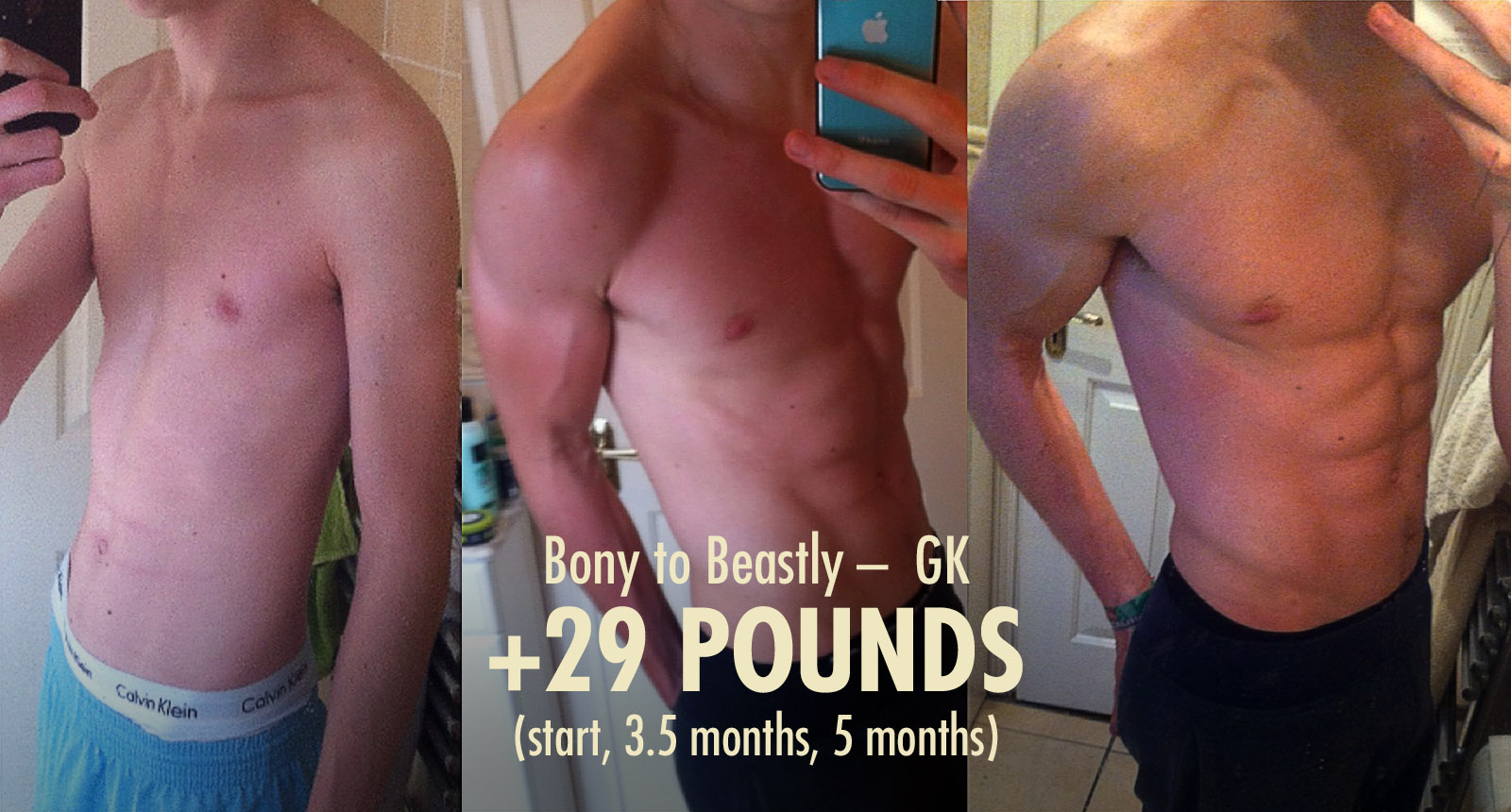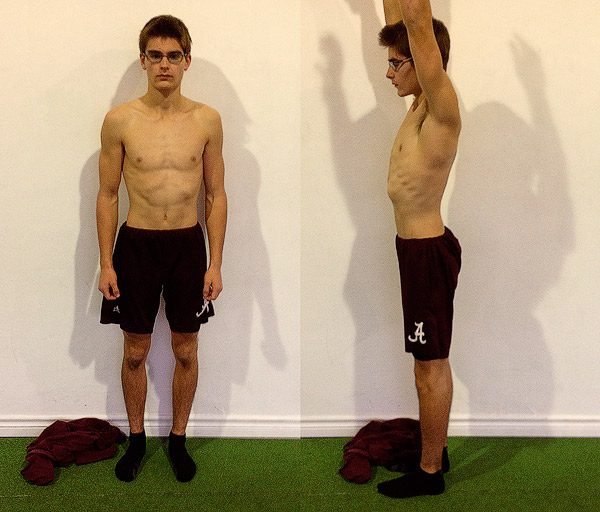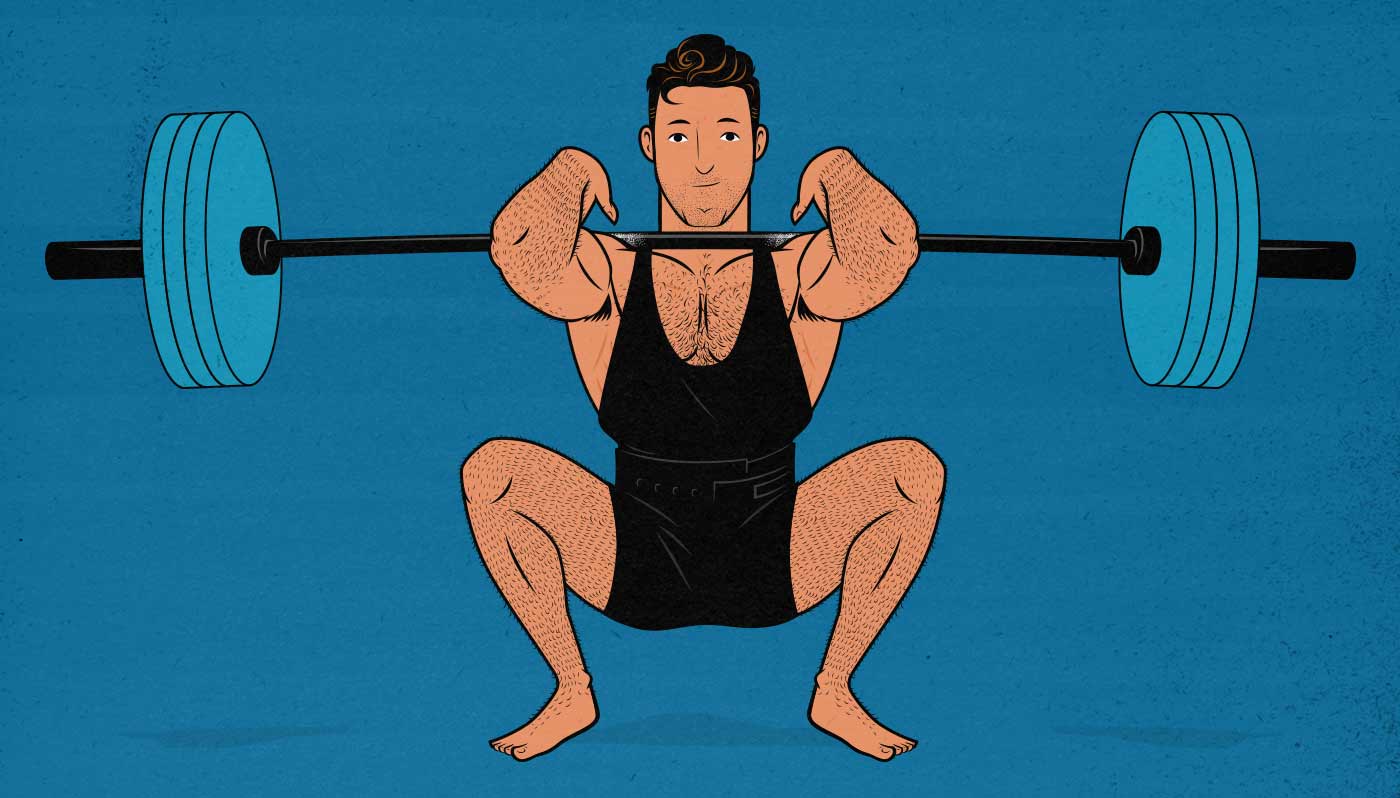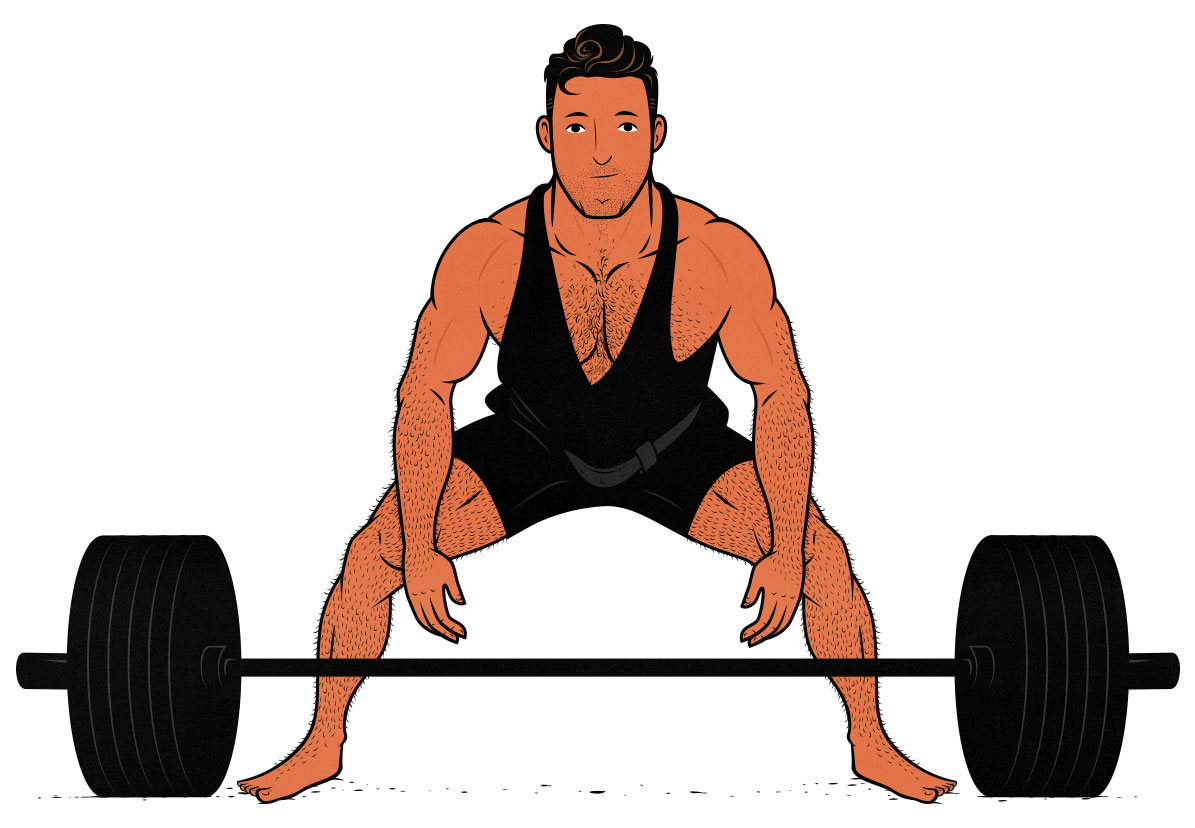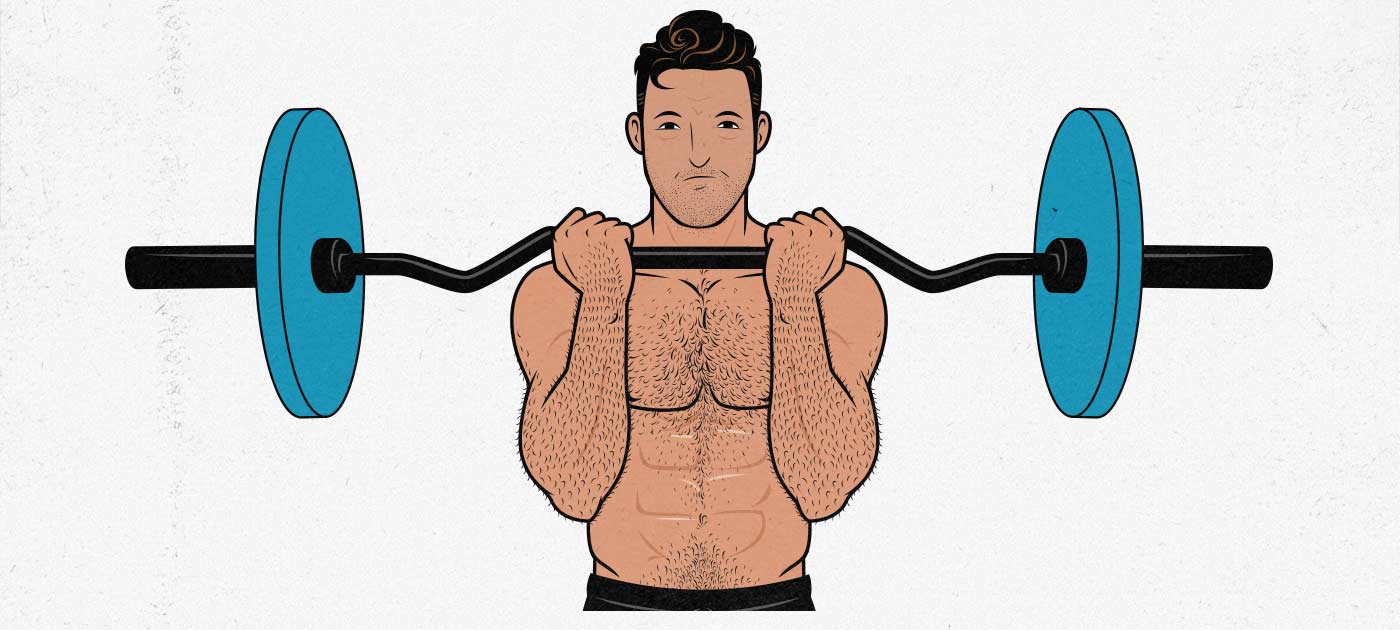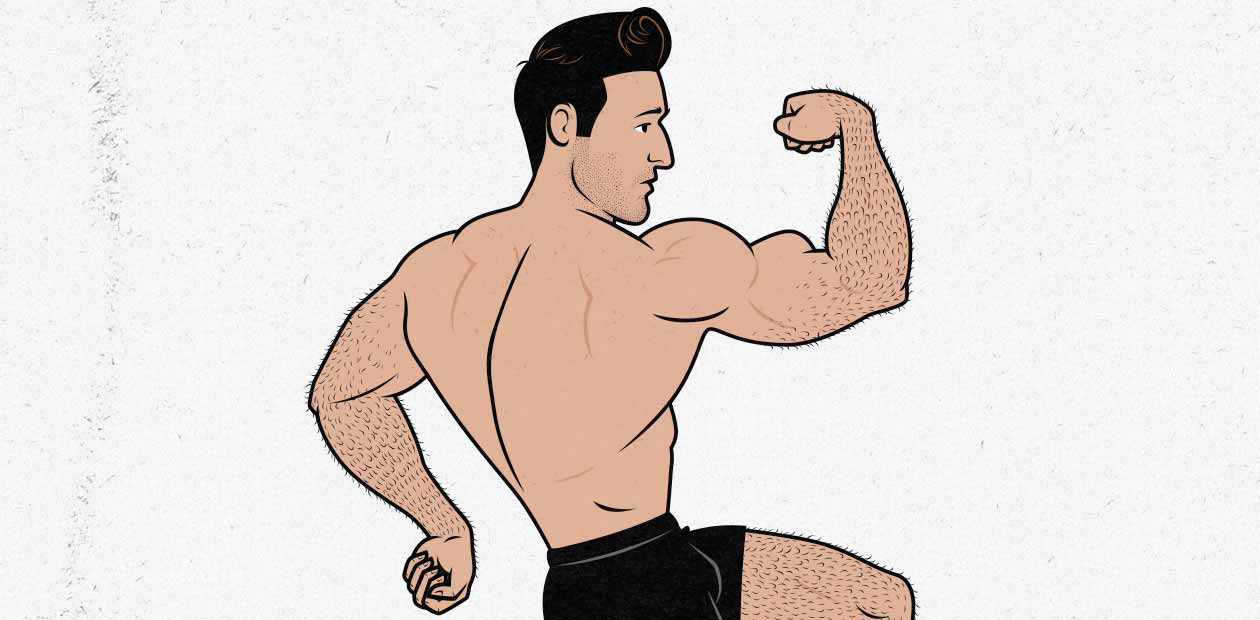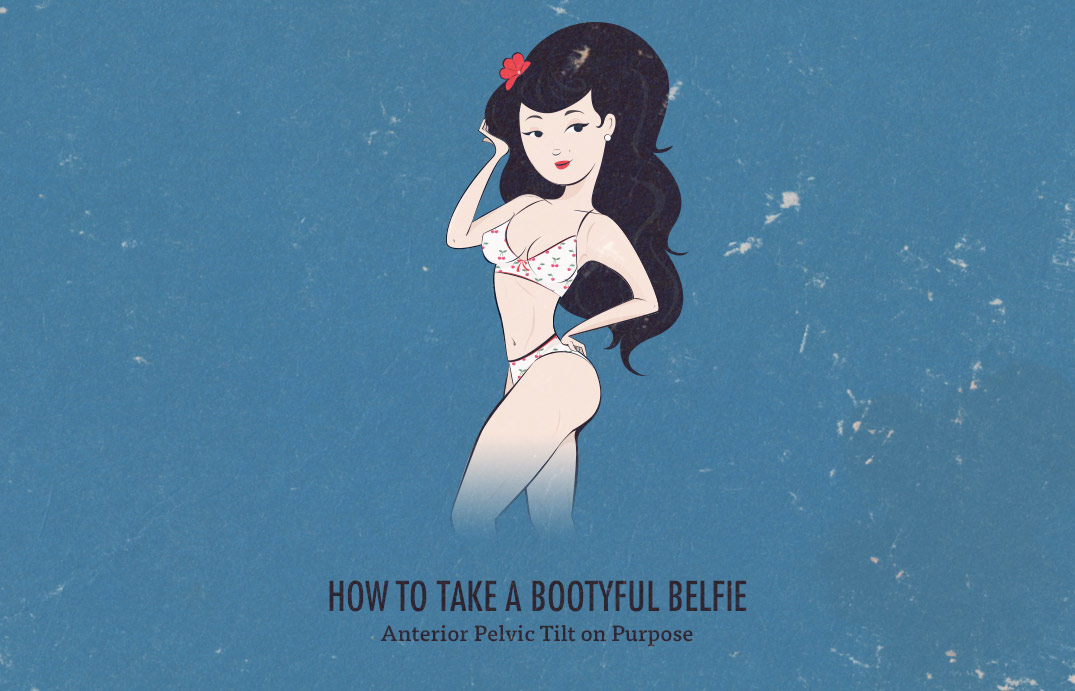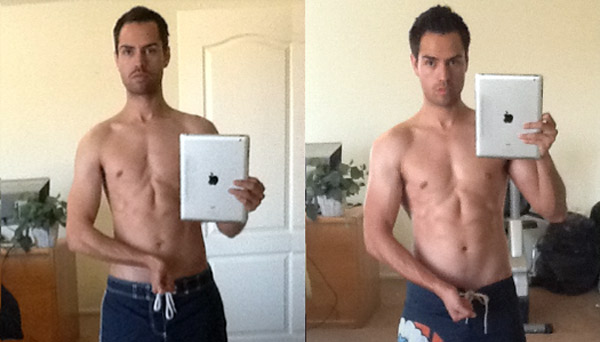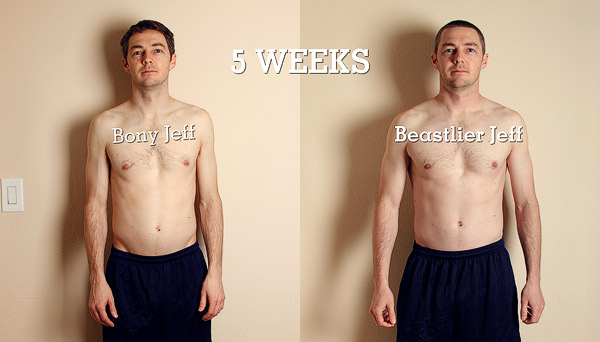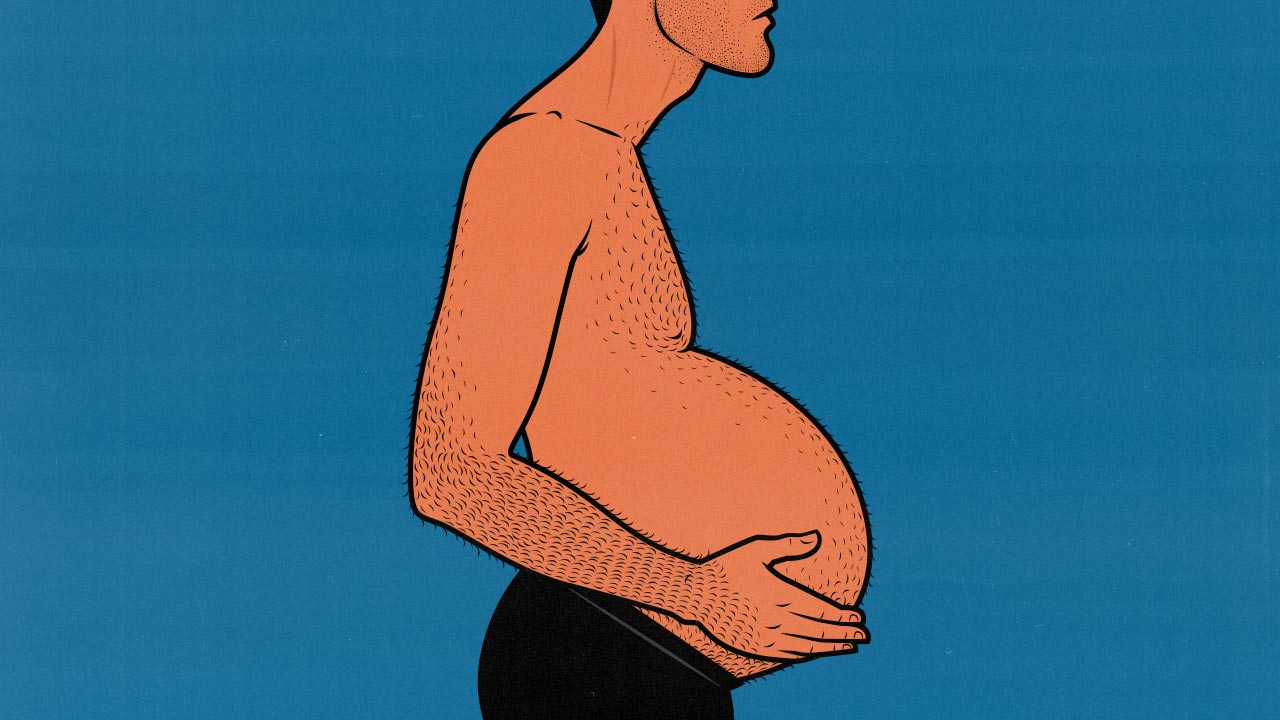Posts by Marco Walker-Ng, BHSc, PTS
As a skinny guy my abs are my pride and glory. Will bulking make me fat?
If you’re a skinny guy who prides himself on having great ab definition, the idea of bulking up can be intimidating. The same is true for skinny-fat guys who have fought hard to lose fat and are now faced with the prospect of gaining it back.
Frankly, most people who bulk up do wind up gaining some fat. That’s not because they’re doing anything wrong, either. When gaining weight, you need to eat in a calorie surplus. And when you eat in a calorie surplus, there’s always the risk of some of those extra calories being stored as fat.
The good news is that as a naturally skinny guy—even if you’re naturally skinny-fat—you’ll probably have a small number of fat cells than the average overweight person. Because of this, ectomorphs tend to be a bit more resistant to gaining fat than the other male body types (study). If you bulk cleverly, you should be able to build muscle quite leanly.
There are also a few things you can do to reduce your risk of gaining fat while bulking:
- Follow the best bulking program you can find. The better your bulking workouts are, the more muscle growth they’ll stimulate, and so the more calories your muscles will soak up. It’s usually better to skip the bodyweight workouts and strength training programs, focusing instead of on bonafide bulking routines.
- Keep your calorie surplus relatively modest. With a good workout routine and a good bulking diet, most skinny guys are able to build muscle quite quickly and leanly during their first few months of training. During this period, we normally recommend gaining around a pound per week. However, if you’re worried about gaining fat, eat in a smaller surplus and gain weight more slowly. Gaining 0.5 pounds per week will give you a better shot of avoiding fat gain while bulking.
- Eat enough protein. Protein is the raw material that muscle is built out of. In order to build new muscle mass, we need to be consuming enough protein to build that muscle with. Unless you’re bulking on a vegan diet, getting enough protein from whole foods isn’t that difficult. If you’re finding it difficult, though, try getting a protein powder.
- Eat a higher carb diet for leaner gains. This one is surprisingly controversial, especially now that ketogenic diets are becoming more popular. However, keto isn’t designed for bulking, it’s designed for weight loss. The same is true with low-carb diets. Most guys are able to build muscle more leanly if they get up to around 50–60% of their calories from carbohydrates. (Having a little bit of sugar in your bulking diet is usually okay, too, provided that it’s not more than 10% of your total calorie intake.)
- Eat mostly whole foods for general health. Whole foods tend to contain more vitamins, minerals, phytonutrients, and dietary fibre. That’s going to help you build more muscle, and it’s going to help reduce the amount of fat you gain (study). Now, it’s true that foods that are higher in fibre are also more filling, which can make it hard for us skinny guys to eat enough calories. But there are ways to eat more calories while still eating a diet that’s healthy overall.
- Add in some cardio alongside your bulking workouts. If you’re new to exercising, lifting weights will probably improve your cardiovascular health. Even then, though, you’ll probably be able to build muscle a little bit more leanly if you add in a little bit of dedicated cardio to your bulking routine.
- Bulk up your abs. Most overweight people are naturally muscular in their abs and lower bodies. After all, they need to carry around their extra bodyweight with them everywhere they go. This gives their abs a ton of stimulation as they go about their everyday lives. This isn’t true for ectomorphs. Our lighter bodies don’t require as much core strength, so unless we train our abs directly, us skinny guys will often wind up with fairly skinny abs.
There’s more good news, too. Lifting weights will improve the insulin sensitivity in your muscle cells, making it more likely that the food you eat will go to muscle instead of fat (study). Plus, having more muscle mass on your body will further improve your insulin sensitivity, making it easier to be lean and muscular in the longer term (study, study).
There are tons of things that affect how lean your gains are—we’ve written an entire book about it. However, if you keep these principles in mind, you should do pretty well.
Why Can’t I Build Muscle?
Our specialty is helping naturally skinny hardgainers bulk up. One of the main questions we get is: why can’t I build muscle? We have skinny guys coming to us after years of trying and failing to build muscle. No matter what they try, their bodies don’t grow. It’s a rare issue. Most people are overweight. But it’s not rare here. This is what we do.
So, first of all, I’m a hardgainer myself. I grew up skinny, and I spent several years trying to build muscle without gaining a single pound. Even though I was exercising, lifting weights, and eating as much food as I could, my body refused to gain muscle. I gave up several times, assuming that my genetics would keep me skinny forever. Sometimes I was so frustrated that I would give up for months or even years at a time.
But I did eventually figure it out. I did eventually succeed at building muscle. Here’s a photo showing me at 130 pounds and then at 190 pounds, at around 11% body fat in both photos:
My transformation was completely natural—just weight training, eating a good bulking diet, and improving my lifestyle—and I was able to gain 55 pounds within just two years. So not only was I able to build muscle, but I was able to build it quite quickly. It’s kind of crazy remembering back to when I thought I had poor muscle-building genetics. I didn’t. I just wasn’t training and dieting in a way that suited my naturally skinny “hardgainer” body type.
I’m not an outlier, either. Before he started helping college, professional, and Olympic athletes bulk up, my business partner, Marco Walker-Ng, BHSch, PTS, PN, gained 63 pounds while getting his health sciences degree and his personal training certifications:
And we’ve reproduced these results in thousands of online clients over the years, such as Hugo, who gained forty pounds during a single year:
So then the question is, if our genetics aren’t limiting our muscle growth, what the Hell is going on? Why is it so incredibly hard for us to build muscle? Why is it that we spend years without making any gains and then all of a sudden explode into growth?
The first reason is the more obvious one. Hardgainers are good at building muscle, we’re just not very good at gaining weight. And if we aren’t gaining weight, there’s no surplus material to build muscle tissue with, and so we fail to gain any muscle. It’s only once we succeed at gaining weight that our muscle growth kicks into gear.
For instance, one study looking into muscle-building genetics found that skinny guys are able to build muscle more quickly than other body types. And that’s great, right? But the researchers knew that to gain muscle, we have to gain weight, so they disqualified all the participants who weren’t able to gain weight.
(Note that skinny-fat guys have a slightly different issue. We have a separate article for skinny-fat guys.)
Why Can’t We Gain Weight?
So what this study shows us that we can build muscle wonderfully well if we can succeed at gaining weight. But for hardgainers, gaining weight can be extremely difficult. We have a full article on why it’s so hard for hardgainers to gain weight, but here are a few reasons:
- Because our torsos are thinner, our stomachs are physically smaller.
- Because we have less fat to insulate us, more of our body heat radiates outwards, and our metabolisms rise higher.
- Being thin gives us a greater surface area relative to our weight, causing us to radiate even more heat outwards, and causing our metabolisms to rise even higher.
- Many of us are fidgety and/or put our bodies in inefficient positions, raising their metabolisms higher still.
- Because we’re more insulin sensitive, we feel full more easily, at which point it becomes extremely uncomfortable to continue eating.
- When we get stressed or busy, our appetite disappears and we often forget to eat.
So as you can see, our stomachs are smaller, our metabolisms are faster, and our appetites are less aggressive. This can make it very difficult to eat enough food to gain weight, which is made harder still because all of the popular diets were created for overweight people trying to lose weight.
For example, intermittent fasting is often advertised for helping people make lean gains. But the base assumption is that people are overeating. It’s a diet designed to help people eat less food. Not only does intermittent fasting make it harder to gain weight (study), but it’s also actually quite bad for building muscle.
Another example is low-carb and ketogenic diets, which have become popular diets to combine with weight training. Again, the whole point of limiting carbohydrates is to reduce our calorie intake, making it harder to gain weight. These are weight-loss diets. No wonder that if we try to use them to gain weight, we fail.
Why Don’t We Build Muscle When Working Out?
The other problem that hardgainers run into is that most workout programs aren’t designed to stimulate muscle growth.
Some types of exercise, such as cardio, obviously aren’t designed for building muscle. I went through phases of focusing on cardio because I was fed up with being the skinniest guy at the gym. At least with cardio, it’s something that I was naturally good at. I could tell that my lighter frame gave me an advantage over the typical overweight person. Cardio is quite good for our health, too. We build more blood vessels, improve our oxygen delivery, and develop a higher red blood cell count. Great things, but I knew it wouldn’t help me build muscle, and I knew that building muscle was even more crucial for my health. After all, I was clinically underweight. So I would eventually turn back to weight training. And that’s where things got confusing.
With weight training, I assumed that all of it was designed to stimulate muscle growth. But that’s not the case. The vast majority of people are overweight. In fact, according to one survey, only 3% of people are trying to gain weight. We’re a tiny minority. Even with weight training, most programs aren’t designed to help skinny people bulk up.
For instance, CrossFit is a type of exercise known as high-intensity power training (HIPT), which is quite similar to high-intensity interval training (HIIT), except that it promotes fitness adaptations by using explosive Olympic weightlifting instead of sprints. In my naivety, I didn’t realize that CrossFit was just another type of cardio—cardio done with weights.
Now, CrossFit can certainly stimulate some muscle growth as a byproduct, especially if you gain weight and muscle easily. But the time under tension is very low, the lifts aren’t great for stimulating muscle growth, there’s no system of steady progressive overload, and there’s a huge emphasis on power and momentum. CrossFit is not a good way to train for muscle growth.
So what about the opposite of CrossFit? What if instead of doing high-rep Olympic weightlifting, we choose low-rep strength training? That’s where things get really confusing. Strength training programs like Starting Strength and StrongLifts 5×5 often claim to be quite for building muscle, and that’s not entirely wrong. They’re quite a bit better for building muscle than cardio programs. But these programs aren’t designed for muscle growth either. Rather, the low rep ranges are designed to help people learn to contract their muscles more forcefully. They’re designed to make people stronger for their size. And the lifts—the low-bar squat, bench press, and deadlift—are chosen to help people use the heaviest weights possible, not to help people build muscle.
For example, let’s consider the main strength training lift, the low-bar squat (as pictured above). Most strength training workouts start off with a few sets of low-bar squats, and that’s perfectly fine if your goal is to become a better powerlifter. It’s a great lift for packing meat onto our hips, adductors, and quads. But it uses a relatively small range of motion, it does a poor job of engaging our upper-back muscles, and it can be hard on the hips and shoulders. If our goal is to gain muscle mass, it’s not the best option.
Now consider something like a front squat (pictured above). Front squats are a bit lighter than back squats. Most people can only front squat about 75% as much weight as they can back squat. But they use a much deeper range of motion, they’re much easier on the hips and shoulders, they improve our posture, and they also bulk up our upper backs. As a result, we have a lighter lift that’s easier to recover from, safer, and quite a bit better for stimulating muscle growth, especially in our upper bodies.
We can improve strength training in a number of other ways, too:
- If we increase the rep range from five reps to ten reps, we can stimulate around twice as much muscle growth per set, making our workouts twice as efficient, and freeing up more time for other lifts (meta-analysis, study, study, study).
- We can choose lifts for other muscles that we’re eager to grow: chin-ups and curls for our biceps and upper backs, the overhead press to build bigger shoulders, lateral raises for wider shoulders, and triceps extensions for bigger triceps. We can also bulk up areas that aren’t trained by compound lifts, such as building a thicker neck.
- We can use a mix of shorter and longer rest times to build even more muscle.
This is how the thinking differs between strength training and hypertrophy training—training designed to stimulate muscle growth. When our goal is to train specifically for muscle growth, we can design workout programs that stimulate much more muscle growth, making it far easier to build muscle. Not only will that allow us to build muscle more leanly, but it can even help to increase our appetite and slow our metabolisms. The more muscle growth we can stimulate, the less likely our bodies will be to burn off extra calories.
Summary
You’re not crazy. It can be really hard for skinny hardgainers to gain weight. It’s a well-documented phenomenon with decades of research to back it up. And if we can’t gain weight, then we can’t build muscle. Again, this isn’t controversial. Gaining weight is at the heart of building muscle, especially for guys who are starting off skinny and underweight.
We’ve been there ourselves and we’ve helped thousands of skinny guys bulk up. Almost all of us have gone through a long period of our lives when we worried that it would be physically impossible to build muscle. Some members make it into their forties and fifties before they finally manage to bulk up. For example, our client Eddi only succeeded at gaining muscle right before his sixtieth birthday:
However, it isn’t impossible to gain weight. If you combine a proper bulking diet with a good hypertrophy training program, not only will you finally be able to build muscle, but you’ll probably be able to build muscle faster than any other body type (study).
Here’s what to read next:
Why is one of my shoulders higher the other? And one pec bigger than the other?
My left shoulder has been higher than the other for as long as I can remember. I always thought of it in a superficial way, and figured it must be because I always carried my backpack slung over my right shoulder, pushing it down. Marco had the same thing, but thought it had to do with his skateboarding habits.
We were both sort of right… but mostly wrong.
Both are caused by the same thing: the fact that our bodies are innately asymmetrical. Our brain has a left and right side, and both perform different functions. Our hearts and livers are on just one side of our bodies. The right diaphragm is bigger than the left and has a longer attachment on the spine. Our left and right lungs expand to different degrees. One hand usually possesses more find motor control than the other. We usually favour one leg over the other as well, as Marco discovered when he was skateboarding.
It’s no wonder that over the course of our lives we fall into patterns of asymmetry, and that these effects can be seen when we look in the mirror.
If you go and look at the mirror right now, you will probably notice your left knee rotates out and your right knee rotates in. You may also notice that one shoulder sits higher than the other—usually the left. Another common compensation is a right rib hump. Your right rib on the backside will be more filled with air due to this twisting of the ribcage. One pec might thus grow bigger than the other and sit on your rib cage a little differently. If you don’t have a mirror handy, this pelvis/rib twist usually looks something like this:
For most people this isn’t a problem. The links between posture, performance and injury are iffy, since our bodies are so good at creating functional compensation patterns. It’s hard to tell whether they really have a large impact on one another, especially when we’re not currently injured or in pain. Better posture and better symmetry could theoretically improve your mood, your confidence, your breathing, your anxiety, your strength. It’ll certainly make you look better too. And if you’re currently in pain, it might help you get rid of it.
A good weightlifting program will do a good job of this, provided you develop good habits, train in a balanced way, and lift symmetrically. Even just learning how to squat well and squat heavy can work wonders.
Sometimes it can take a little extra work though. Here’s a good drill to help you learn to hold your hips in a good position while moving. Since most postural issues stem from the hips, mastering this will usually address the asymmetry at its root and allow you to develop a more balanced upper body.
Take it away, Marco:
Do Skinny Guys Need to Squat or Deadlift to Bulk Up?
No lift is mandatory. You can bulk up without squatting, without deadlifting, or, in extreme cases, without doing biceps curls. So long as you’re stimulating some of your muscles, then some of your muscles will grow. So the worst thing you could possibly do as a skinny guy is avoid lifting weights simply because you can’t do a particular movement or lift.
How to Bulk Without Squatting
Squats tend to be easy to skip. If you skip your squats, you’ll probably get away with it. People don’t really look at your legs, and they don’t play a large role in male aesthetics. I mean, this survey about the ideal male body doesn’t include a single leg. Not even one leg. Most of the research about how male muscularity relates to attractiveness doesn’t include legs either.
But on the off chance that anyone ever asks why you never squat, you can just tell them that you have cranky knees or some other common injury. Cranky knees are quite common, and not just in people who are trying to avoid squatting. Another good excuse is to just blame your small legs on the squat rack always being busy.
If neither of those excuses do the trick, try claiming to have early-onset arthritis from doing too much squatting in the past.
If all else fails, just pick the best squat variation for your needs. Some are easy on the knees, some load the spine less heavily, and some are better for guys with pre-existing lower back injuries. I know it’s not ideal, but if you have to squat, there will almost certainly be a squat variation that works well for you.
How to Bulk Without Deadlifting
Skipping deadlifts is a little harder because they work your hips, posterior chain, and upper back. There are a few deadlift alternatives that give you all of the same advantages, such as trap-bar deadlifts, sumo deadlifts, and Romanian deadlifts. But those variations are still deadlifts. If you’re avoiding deadlifts, you’re probably avoiding those, too.
So, you might need to replace the deadlift with a few different exercises that add up to give you the benefits of deadlifting. For example, you can do goblet squats for your glutes and postural muscles, bent-over rows for your back, and leg curls for your hamstrings. That sounds like more work, but you’re probably already doing squats and rows, and leg curls are easy to toss in on top of that.
Can You Bulk Without Biceps Curls?
What about skipping curls? Skipping biceps curls has gotten quite common in the strength training community. The most obvious excuse for skipping biceps curls while bulking up is by doing chin-ups “instead.” If you do chin-ups with an underhand grip, they’ll train your biceps just as well as biceps curls would.
However, that excuse fails because of the word “instead.” There’s no reason for it. Doing biceps curls in addition to chin-ups would help you build even bigger biceps, so I can’t think of a good reason not to do both. That’s why some lifts are easier to skip that others.
What Lifts Do You Need to Do While Bulking?
Bulking programs can be quite flexible once you know the rules. If you want a good framework for what lifts to include in your bulking program, here’s our article about how to structure an ideal bulking workout, and here’s our article about the “Big 5” Bulking Lifts. You don’t need to do every lift, and your workout routine doesn’t need to be perfect. So long as you lift weights and eat a good bulking diet, you should be able to make good progress.
If you can’t squat, that’s fine. There’s probably a variation that will suit you, but meh, not squatting isn’t the end of the world. The same is true with deadlifts and, really, any other lift.
The only lift you really can’t skip is the biceps curl. Curls are what bulking is all about.
Why do I have a little belly even though I’m fairly lean?
One reason could be that you’re “skinny-fat”. Masculine hormones generally cause us to store fat in our stomachs, so it’s actually pretty common for skinny guys to start developing a bit of a belly—and only a belly—if they aren’t eating very well or doing much to encourage muscle growth (like lifting weights). The solution to that would be to start eating and training for muscle growth.
…However, many of the skinny “pot bellies” we see have nothing to do with fat at all—they’re postural. More specifically, they’re caused by an anterior pelvic tilt. This is incredibly incredibly common. I’d guess that around 80% of the skinny guys coming into our program have them. So around here we affectionately call this postural pot belly issue “ecto-belly.”
Here’s what I mean:
In the first image you’ve got a typical skinny guy with ecto-belly. His pelvis is tilted forward, perhaps from years of spending a lot of time sitting and not a lot of time developing strength or working on mobility. This creates an arch in his lower back (lordosis). In order to keep his upper body upright, his ribs then need to flare upwards. This creates a flat zone in the mid back. In order for his head to remain upright, his upper back rounds forwards and his neck juts forward. This creates rounding (kyphosis) in his upper back and something called “forward head syndrome.”
This arsenal of postural compensation patterns isn’t that bad. Many skinny guys go through their entire lives without ever addressing it and nothing all that horrifying happens. This posture also boosts the perceived size of your tush, making it a create choice when taking belfies*.
Most men try desperately to get out of it though, and there’s good reason for that. It can make it dangerous to lift weights overhead, it could potentially reduce athletic performance, it gives you the appearance of a skinny dude with a pot belly, and it also makes you look a whole lot less confident. In fact, it mirrors a timid posture so perfectly that your brain will respond to it by reducing your actual confidence levels.
Luckily it’s very fixable. Learning how to do deadlifts, squats push-ups and planks properly will go a long way to fixing it, so a good strength training program (like ours!) will help a tremendous amount even if you don’t pay that much attention to your posture. You can also work on building up better glute strength, doing planks, and practicing maintaining a neutral pelvis and strengthening that position with lifts like the dead bug:
Postural stuff can take time. If you’re lifting well though, you’re well on your way. You’ll be standing a little taller and more confidently each week.
*Butt selfies
How Long Does it Take to Gain 20 Pounds?
Gaining 20 pounds is a great goal for a beginner. It’s ambitious enough to produce dramatic results. You’ll be noticeably bigger, stronger, and more robust. You’ll push your clothes to their limits.
Most skinny guys can gain 20 pounds within a few months. That’s long enough to build good habits and get some momentum going, but not so long that it becomes demotivational.
We have personal experience bulking up. Perhaps more importantly, we’ve helped over 10,000 other skinny guys bulk up over the past decade. We’ve averaged some client stats and got permission to share progress photos and measurements from one of their bulks.
Read MoreHow A Skinny Guy Gained 10 Pounds in 5 Weeks
The skinny man on the left is Jeff before starting the Bony to Beastly Bulking Program. He started the program at 136 pounds with internally rotated shoulders, a head that jutted forward, and a posture that made his belly stick out—issues that he was eager to fix. Most of all, though, Jeff was tired of being skinny and eager to bulk up.
The muscular man on the right is Jeff 5 weeks later, weighing in at 146 pounds and with most of his postural problems greatly improved. He also succeeded in balancing out most of his muscle asymmetries. Most of all, though, he had succeeded at gaining 10 pounds. In just 5 weeks, he had overcome his skinniness. And he was still just getting started.
Read MoreHow to Improve Digestion While Bulking
When I first started bulking, I made a slew of healthy changes to my lifestyle. I started lifting weights, getting better sleep, and eating a more nutritious diet. I expected to have more energy, feel more powerful, and look better. That wasn’t my fate. Instead, I felt tired and looked pregnant. It wasn’t fat, either. I still had abs. But instead of being flat, they curved outwards like a turtle shell.
As I continued to pound down the calories, I started feeling perpetually full, bloated, and gassy. I’d often get indigestion, I struggled with acid reflux, and sometimes I’d get diarrhea. My digestive system had never been strong, but now I was suffering from the classic symptoms of Irritable Bowel Syndrome (IBS). I was clearly doing something wrong, but I didn’t know what it was.
I considered going back to my older, smaller, less nutritious diet, but that would mean going back to being skinny, and I wasn’t ready to give up just yet. Fortunately, there are several proven ways to improve digestion. By making a few key changes to my diet, I was able to strengthen my digestive system and banish my digestive woes.
That was 12 years ago. Since then, we’ve helped over 10,000 other skinny people bulk up. Many of them struggled with digestive issues, including IBS. I suspect that’s why so many of us are skinny to begin with. These are the methods we use to manage their symptoms while helping them build more robust digestive systems.
Read More
